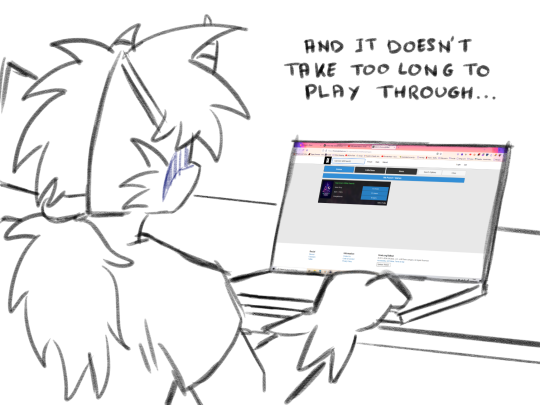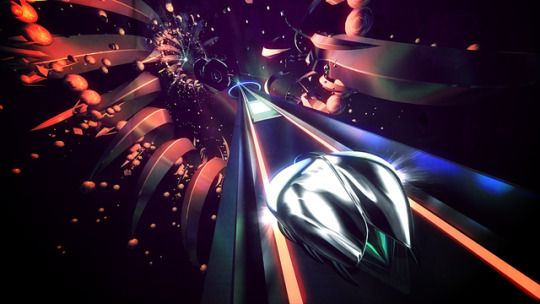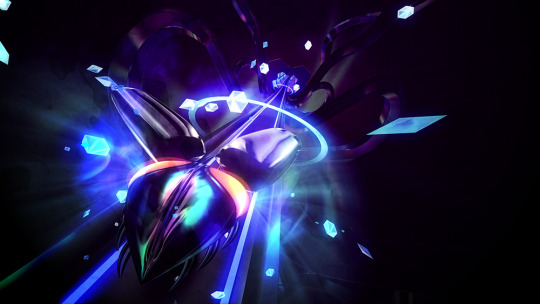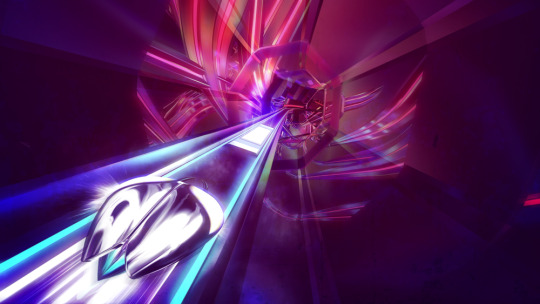#''Oh so it's like Audiosurf all over again''
Text






Okay, I get it now
Thanks @mileikcin for making me curious about this game like god damn I've been missing out
#Sayonara Wild Hearts#THIS GAME IS SO MUCH FUN???#DAMN#AND the OST slaps???#how did I not play this earlier holy shit#some of my reactions including but not limited to:#''BROOO HOHOHOHO'' *mad laughter intensifies under insane good times*#''Oh so it's like Audiosurf all over again''#''THIS IS NOT LIKE AUDIOSURF ALL OVER AGAIN''#''I'VE PLAYED JUST SHAPES AND BEATS YOU AIN'T GOT NOTHING ON M—'' *dies* ''Okay maybe you do get something on me''#''I'VE PLAYED HI-FI RUSH YOU AIN'T GOT NOTHING ON ME'' *misses QTE* ''FUCK!!''#''What the fuuuuuuuuuck''#''THIS GAME IS NOT COMPATIBLE WITH MY ATTENTION SPAN''#''NO MAGICIAN I REFUSE TO SKIP THIS BIT STFU I WILL STRUGGLE BUT MAKE IT THROUGH''#''YOU CAN'T DO THIS TO MY BRAIN PLEASE''#''C'mon smooch the dragon. Can we smooch the dragon? WE CAN SMOOCH THE DRAGON 10/10''#also The Fool is super cute#might add her to my list of cosplays i wanna do#after Chai and Beheaded#Yeah I'm gonna enjoy replaying this game every so often#fave boss are the Howling Moons btw#insane
16 notes
·
View notes
Note
hey. nerds. mun and muse. play audiosurf. both of them. thank

☪️ —— ❝ Oh, I definitely have. It’s like, one of the most relaxing games for me — I looove shooters and fighters, ch'yeah, but something about music and colors… it’s always got me, you dig? ❞

man i’m out of the times i didn’t know there was an audiosurf 2… i will but the first time i played audiosurf all my music was SO OVERKILL i cant wait to struggle again.
i’ll have to wait til i get the cash tho, i start my first job soon! princess over there is rich she can get anything. and now i stream so i wonder if anyone wants to see my failures HAHA
#✧.° ⦙ ʏᴏᴜ ᴀʀᴇ ɴᴏᴛ ᴛʜᴇ ᴏɴᴇ ʏᴏᴜ ᴜsᴇᴅ ᴛᴏ ʙᴇ. — ❪ & anon. ❫#✧.° ⦙ ᴛᴇᴍᴘᴛᴀᴛɪᴏɴ ɪᴍᴘʟᴏʀᴇs ʏᴏᴜ ᴛᴏ ᴋɴᴏᴡ. — ❪ & asks. ❫
1 note
·
View note
Photo

Thumper, by Drool. Available on Windows and PS4. Compatible with Oculus VR and PSVR (VR is optional).
Rhythm is a central part of our existence as breathing human beings with functioning hearts. There’s a rhythm in the movement of the planets, which dictates the rhythm of the seasons; the slow annual rhythm of a forest which pumps sap into dead wood every spring. There’s a rhythm inside every living creature, not only in the breath and heartbeat but also in the pulse of electrical charge which drives thought and movement. There’s a reason why percussion is the oldest form of music in the world; we are naturally tuned to find rhythms. Attempt to disrupt a beat and you’ll probably find yourself simply creating a new pattern. Syncopation is, after all, simply the intentional disruption of a rhythm to create the desired effect. Rhythms don’t have to be perfectly paced 4/4 affairs. I’m fond of the driving, eternal forward stumble of the 7/8 rhythm myself.
That’s probably the reason why a good many video games out there are based on rhythm. We have the Guitar Hero and Rock Band games made by Harmonix, the indie music-parser games like Audiosurf and Beat Hazard, DDR-style dance pad games, Crypt of the Necrodancer, Osu, a myriad of mobile games like Cytus and Deemo, and many, many more that I’ve probably never even heard of. Even games that aren’t focussed on music can have a rhythmic element to them at some deep, instinctual level. When playing Bloodborne I’ve found that there’s a sort of deliberate rhythm of dodge, strike, and parry when you fight NPC hunters, and that’s when the game is at its best. Rhythm and music, rhythm and action, these are familiar by now. Rhythm horror, though? That’s a new one.
Thumper has no jumpscares, and though the survival aspect of survival horror is very present this isn’t a slow and methodical creep-around-corners-and-hide-in-closets journey. Thumper is fast and deadly and violent in a metallic and bloodless but terribly visceral way. Thumper deals in the horror of the unknown, a Lovecraftian insignificance amidst the cosmos horror. Here you’ll find the creeping dread of uncertainty, of knowing that no matter how strange and unsettling the things just got, what comes next is probably going to be worse in a way that you can’t possibly foresee. This is probably why Thumper is a little difficult to describe.

You’re a metal beetle, eternally careening along a rail through a hellish void to the sound of thumping, crashing rhythm and electronic drones. The music is difficult to classify as anything that I’ve heard before, mostly percussion. This is fitting considering that one of the developers is ex-Harmonix artist Brian Gibson, the bassist for the noise rock duo Lightning Bolt. The things that you witness on your journey, pointed tentacles and abstract shapes, reflect the darkly-colored void like chrome plating yet move in a disconcertingly organic manner. Sometimes you speed between rows of waving, angular antennae. Occasionally you encounter some strange, otherworldly entity, some fractal thing made out of raw, folded firmament. Each of the game’s nine levels concludes by confronting a giant, increasingly twisted and inhuman skull. H.P. Lovecraft would likely use the word ‘cyclopean’ to describe what goes on in Thumper, though he’d be hard pressed to make any sort of racial metaphors with it. Sparks fly and the screen shakes when you hit corners and break barriers, and the combined music and sound effects fill every wavelength the aural spectrum to complete the utter sensory overload. ‘Rhythm violence’ is the tagline used by the developers, Drool, to describe Thumper, and it fits oh so well.
None of this really captures the full extent of what it is to actually play Thumper. Perhaps we can start again with the controls. It’s simple: one button and four directions. Your beetle will encounter glowing panels on the rail. Press the button when you pass over to create a bass thump. Holding the thump button tucks your shiny beetle body tighter into the track and lets you safely grind around turns and break through barriers. Two levels into the game, you learn that you can leap into the air to hover over spike traps and hit floating rings to snag more points. Three levels in, you’re taught to slam back down onto the thump pads while you’re in the air, sending a wave of distortion down the track. You’d do this to break the barriers some bosses will put up, and to create combos for more points if your timing is good. Later on, the rail will occasionally split into multiple lanes. You’ll need to flit between lanes to hit thumps and dodge obstacles, and jump back onto the right lane when they recombine into one. The controls are simple and the pace at which the game introduces new mechanics is gentle. It’s very easy to pick up and play, but from around Level 4 onwards Thumper takes the kid gloves off and cranks the intensity to the max.
Fortunately, it’s possible to simply survive your way through this game. Perfection isn’t required to progress, and, besides, perfection is difficult to achieve at the speed at which Thumper moves. Missing the thumps might cause you to lose your combo, but it won’t kill you. Running into a corner without turning in the right direction or hitting an obstacle, on the other hand, deals damage. In later levels a ring will occasionally appear around the track for short periods of time, zapping you with lasers if you miss a thump. The first hit causes you to lose your outer shell. The second hit kills you. Each of the game’s nine levels is divided into a number of sections, with checkpoints between. You respawn at a checkpoint when you die, so while the game does get very tough near the end it’s got a certain amount of leniency when it comes to progression. But then you encounter a boss, an entity of some kind which blocks your way forward. Are these things manifestations of the twisted space itself, are they beings running along the rail in front of you, or are they creating the rail moment by moment, placing the obstacles in your way as their only form of self-defense? Either way, now you’re required to hit all the thump pads in a segment of track that will begin repeating itself until you either get the pattern right or die. Thump all the pads in a segment and you get a special, brightly-glowing one that causes you to fire a blast of energy at the boss. Rinse and repeat until the boss disintegrates into a wash of debris.

The mere mechanics of the game don’t really do it justice either. The tight and simple controls are part of the whole thing, certainly, but it’s the game’s unrelenting aesthetic crossed with responsive controls, a visceral sense of feedback, the sheer sense of speed and, most importantly, a rock-solid understanding of rhythm that makes it all work. The beats that you, the player, the beetle are hitting aren’t necessarily going to be “on the beat” with the music. The developer duo Drool know how to play with a rhythm, how to syncopate, sub-divide, and subvert a beat. The thumps, slams, slides and ticks that the player makes as they speed along the track overlay and then weave into not only the background drones and beats but also the sounds that the various obstacles make as they appear on the track. There’s an important element of call-and-response to this game, with the various obstacles signaling their presence a (musical) bar before you need to react to them. In later levels the nearly-subconscious recognition of these aural cues is essential as obstacles come fast and thick, the track itself twisting, turning and obscuring obstacles until the last moment. It might even be possible to play this game with your eyes closed, though I personally wouldn’t attempt it.
The moment that Thumper really clicked for me, though, was when I returned to earlier levels to replay them with the knowledge and reflexes I’d learned from later levels. It was when I started really playing the earlier levels, not simply surviving them, that I started feeling a mix of apprehension, elation and flow. Thumper is possibly the only rhythm game in the world to make me feel like I was actually performing live music. Performing live music is to pour everything you have into a brief period of time in which everything could go wrong. Preparation can only take you so far. When you’re performing you are not only turning rote-remembered skills into a form of self-expression, you’re reacting and adjusting to your instrument and the performances of other performers moment by moment. Thumper creates that feeling by reducing nearly everything to percussion, thus tying all the sounds the player makes to the game’s simple controls. Playing Thumper means creating a piece of music which corresponds directly to your actions. Thumper builds on this by giving the player leeway to add their own flair, to increase risk and reward by adding aerial thumps and going for perfect turns. The beat will go on whether or not you hit all the cues, but there is a satisfaction in not only playing your part of the music but playing it well. You hear what seemed like a series of random obstacles turn into an entirely new section of the soundtrack, performed by you.
Some might express disappointment that Thumper doesn’t offer the sort of endless replayability that a game like Audiosurf provides. Thumper can’t dynamically parse custom music files, but, really, that misses the point of Thumper. Every element of Thumper, from the oppressive soundtrack to the placement of every obstacle to the responsive controls to the stark and alien visuals is designed to create a singular experience. The end result is something strange and unsettling. Thumper doesn’t gently coax the player into a flow state, it instead pushes you onto the edge of the precipice and challenges you to thrive there. The game may only require gentle taps and presses, but I’d find my thumb getting sore partway through a level through sheer tension and wouldn’t even notice until the level finished. I wouldn’t recommend playing for extended periods of time unless you want your arms to lock up out of stress. The mounting fear of what comes next is countered by the demands imposed by Thumper’s speed. You either focus and become one with the beat, reacting to and perhaps even overcoming everything the void throws at you, or else you crash and explode. You may never fully understand the hows, whys, whats and wheres of your situation, but you can still plunge into that abyss and master the rhythm. Perhaps you might even find some sort of meaning in the act of thumping itself.
Oh, and high scores. There’s a leaderboard for each level and all sorts of little nuances to eking out a high score, just in case you didn’t feel intimidated enough by the hellish void. If you like pushing your thumbs and reflexes to the limit, that’s for you.
Tune in next time when Taihus dedicates his life to the glory of mankind.
-Taihus “I am a space beetle hurtling towards infinity; shiny and chrome” @raincoastgamer
#Video Games#gaming#Reviews#Review#Thumper#Drool#VR#Raincoastgamer#A Rain Coast Gamer's Ramblings#Taihus#The Oblivian Studios#Oblivian Studios#Oblivian
2 notes
·
View notes